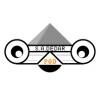Here are ten tips to enhance your website’s conversion rate through web design:
- Prioritize User Experience (UX): A positive user experience builds trust and encourages visitors to become customers. Research from Stanford University reveals that website design is the primary factor users consider to determine credibility. Additionally, Forrester Research suggests that effective UX design can boost conversion rates by up to 400%.
- Select Appropriate Colors: Color choice plays a crucial role in marketing and influences purchasing decisions. Studies conducted by the Institute for Color Research indicate that between 62% and 90% of initial assessments are based solely on color. Furthermore, research by Kissmetrics suggests that 52% of web users won’t return to a site with unappealing colors and aesthetics. When designing your website, opt for attractive color combinations that align with your brand image and evoke the desired mood for your customers.
- Optimize for Mobile Users: Given that approximately 70% of website traffic originates from mobile devices, it’s crucial to provide an excellent mobile experience. To improve mobile conversion rates, ensure your website features a responsive layout, simple forms, and prominently visible call-to-action buttons that are easy to tap with a finger.
- Understand the F Pattern: Research indicates that users tend to scan websites following an F pattern. They start at the top left corner, move horizontally to the top right corner, and then vertically down the middle of the page. Since the top left corner is where users’ attention first lands, ensure it creates a positive impression with attractive design and essential information and conversion points.
- Follow the Rule of Thirds: The rule of thirds, derived from print design, can be applied to web design to determine optimal areas to place key content based on users’ natural eye movement. Mentally dividing your web page into a tic-tac-toe grid, the four corners of the center square become ideal locations for crucial elements such as headers and calls to action.
- Utilize White Space Effectively: White space, or negative space, refers to the empty areas surrounding images, text, and other graphical elements on your website. Avoid the temptation to fill up all the “blank” space, as insufficient white space can make web pages appear cluttered and hinder users from finding the necessary information for conversion.
- Simplify Navigation: Guiding site visitors towards desired actions is best achieved through intuitive and user-friendly navigation. Designing an easy-to-use navigation system not only helps users find what they’re seeking but also facilitates reaching conversion points with minimal clicks.
- Create Compelling Call-to-Action (CTA) Buttons: CTA buttons prompt users to initiate conversions, making their design crucial to improving conversion rates. Studies indicate that red, orange, or green CTA buttons achieve the highest conversion rates, provided they stand out on the page. For more detailed information, refer to our blog post titled “4 Simple Steps to Improve Your Calls to Action.”
- Utilize Images for Directional Cues: To guide users to specific areas on your website, incorporate images that subtly direct their attention. For instance, you can use a photo with a person subtly pointing or looking towards the desired destination, such as a button or CTA. If the existing images on the page don’t naturally serve as directional cues, consider using an arrow to point users towards the CTA.
- Minimize Choices: Studies indicate that an increased number of options leads to decision-making delays. In web design, you can boost your conversion rate by limiting the number of choices users face. If you have a primary desired action for site visitors, offer them a clear path to that action rather than presenting an array of options.
